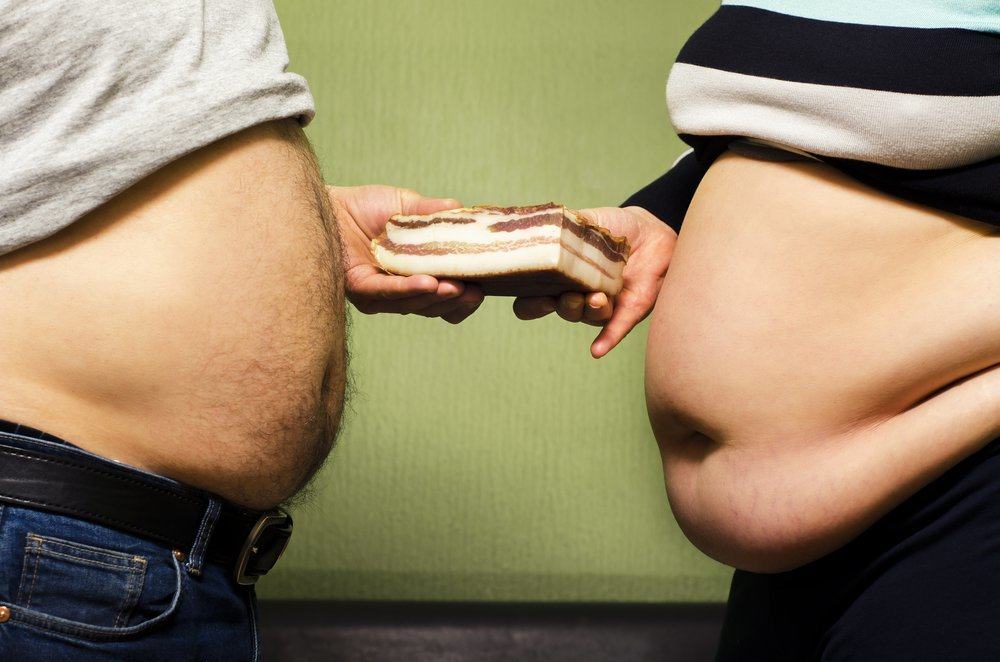Contents:
- Medical Video: Examples of different levels of severity in Childhood Apraxia of Speech (CAS)
- What is dispraxia?
- What causes dyspaxia?
- Dispraxia has many types
- Signs of a child experiencing dyspaxia
- What are the consequences?
- Diagnosis and treatment
Medical Video: Examples of different levels of severity in Childhood Apraxia of Speech (CAS)
You can walk, grasp, type, kick, and wave your hands thanks to the process of coordination of body movements which are inspired by the brain and various nerve cells. This process is very complex and has even begun since a baby that continues to develop until childhood. The existence of problems in the nerves of the brain can cause the process of coordination of body movements also disturbed, which can persist until adulthood. This condition is called dispraxia.
What is dispraxia?
Dispraxia is a form of developmental disorder in fine and rough motor coordination in children.
This condition is caused by a disturbance in the nerves which causes the brain to difficult to process the motion command signal. Simply put, dispraxia makes it difficult for children to think about, plan, execute, and organize movements so that they are unable to carry out general physical activities such as walking, jumping, or holding stationery as well as other children of the same age. Dispraxia also causes a child to have awkward postures and movements.
In addition to disrupting gesture coordination, dispraxia can also affect articulation and speech, perception and thinking. Even so, dispraxia is different from other motor disorders such as cerebral palsy which can cause a decrease in cognitive function of the brain and the level of intelligence.
Dispraxia is a lifelong condition. Even so, there are many types of therapies that can help children adapt to daily activities.
What causes dyspaxia?
Dispraxia is a disorder of body movement coordination caused by nerve signals from the brain to the limb muscles. Many health experts believe that this condition is caused by genetic factors.
The risk of dyspaxia is reported to increase if mothers are accustomed to drinking alcohol during pregnancy, or premature babies with low weight. Even so, the mechanism that causes it is unknown.
Dispraxia has many types
Based on the type of physical movement that is impaired, dispraxia can be divided into several categories, namely:
- Dyspraxia ideomotor: difficulty doing one-step movements, such as combing your hair and waving.
- Dyspraxia ideational: difficulty in making sequential movements, such as when brushing your teeth or clearing a bed.
- Dyspraxia oromotor: difficulty moving the muscles to speak and pronounce sentences so that the things spoken cannot sound clear and difficult to understand.
- Dispraksional constructional: difficulty in understanding spatial or spatial building so that children have difficulty understanding and making geometric drawings and composing blocks.
Signs of a child experiencing dyspaxia
Dispraxia is more common in boys than in women. Variations in symptoms that appear and the severity can be different for each child. The earliest symptoms can have appeared since the baby, such as babies who are late to turn on their stomach or walk.
Here are some signs of dispraction at the age of three years to school age.
- Dispraxia at three years of age:
- Difficulties using cutlery and preferring to use hands.
- Can't ride a tricycle or play with a ball.
- Too late to be able to use the toilet.
- Don't like puzzles and other composing toys.
- Too late to talk until the age of three.
- Dispraxia at the age before school to elementary school:
- Often hit people or things.
- Difficulty jumping.
- Too late to use the dominant hand.
- Difficulty using stationery.
- Difficulty closing and unbuttoning.
- Difficulty saying words.
- Difficulty interacting with other children.
- Dispraxia in middle school age (middle and high school):
- Avoid sports lessons.
- Difficulty exercising.
- Trouble following orders that require eye and hand coordination.
- Difficulty follows instructions and remembers them.
- Cannot stand for a long time.
- It's easy to forget and often loses a lot of things.
- Difficulty understanding non-verbal language from others.
What are the consequences?
Impaired gesture coordination may also cause the following:
- Communication disorders - ranging from difficulty speaking to expressing ideas / ideas. They also have difficulty adjusting the volume.
- Behavioral and emotional disorders - one of which is lack of adult behavior and difficulty in making friends with others. They also tend to have anxiety to socialize with others, especially as they grow older.
- Academic disorders - this is generally related to the ability to write quickly to record lessons and also complete exam questions by writing hands.
Diagnosis and treatment
Symptoms of coordination of gestures can be observed since the child is 3 years old, but most cases get an official diagnosis at the age of five.
Your doctor may also check for other neurological conditions to ensure that your child's body coordination disorders are caused by dispraxia.
If a child is known to experience dyspaxia, then there are a number of things that can be done to help him move. Among others:
- Occupational therapyto improve the ability to move, such as using tools and writing
- Speech therapy to train children's abilities to communicate more clearly.
- Perceptual motor therapy to improve language skills, visuals, movements and listening and understanding.
Besides therapy with doctors,some ways you can do at home to help children with dispraxia are:
- Encourage children to actively move, by playing or light exercise such as swimming
- Play puzzles to help children's visual and spatial perception abilities
- Encourage children to actively write and draw with stationery such as pens, markers and colored pencils
- Play ball throwing to help coordinate eyes with hands.












